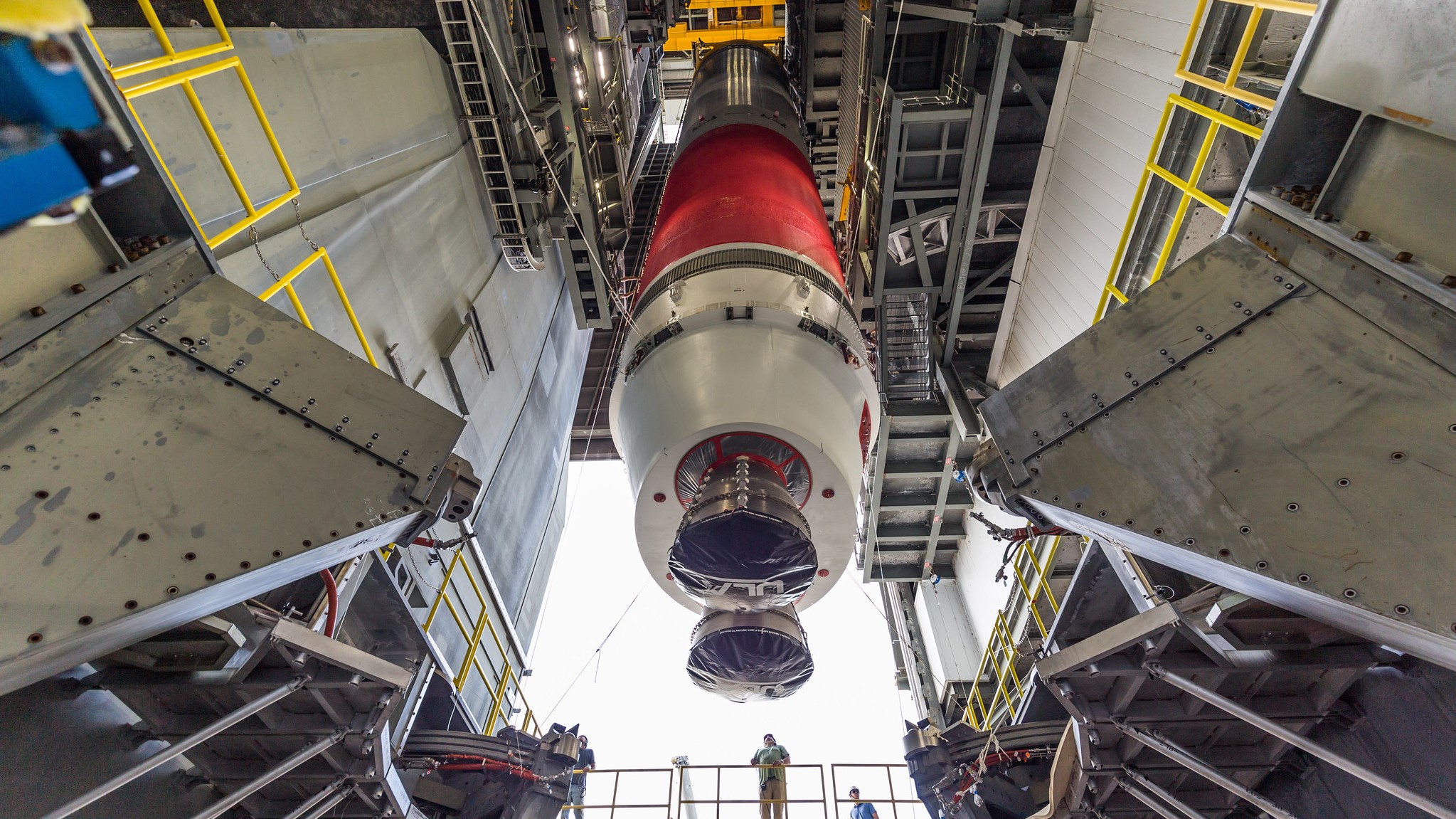Powerful new Vulcan Centaur rocket gearing up for 1st Space Force mission
After two certification missions, the rocket is gearing up for its first national security launch.

In late 2024 or early 2025, United Launch Alliance (ULA)'s Vulcan Centaur rocket will fly its first of more than two dozen U.S. Space Force missions allocated under a national security space launch contract.
"It's incredibly exciting," Mark Peller, Senior Vice President of Vulcan Development and Advanced Programs at ULA, told Space.com recently. "We've stacked the rocket down at the Cape [in Florida] and are going through all the normal pre-launch processing."
The Vulcan Centaur rocket will replace ULA's workhorse Atlas V, which has been flying since 2002. ULA chose the BE-4 engine from Blue Origin to power the newer rocket's first stage, as opposed to the Russian-made RD-180 used by Atlas V.
"As we transition operations from Atlas to Vulcan," Peller said, "the team I formed to develop Vulcan continues to work though planned upgrades to Vulcan to improve its performance, its versatility and meet the evolving demands of our customers in a competitive marketplace."
Related: Facts about ULA's new Vulcan Centaur rocket
One of Vulcan’s benefits is lower-cost launches, due to what ULA calls sensible, modular, autonomous return technology, or SMART for short. SMART allows for the most expensive rocket parts to be recovered post-launch, then refurbished for reuse. "The majority of the value of the rocket is in the back end that contains the engines and lots of other critical systems," Peller said.
SMART reuse draws on a non-propulsive solution to recover the back end downrange of the launch. "We use an inflatable heat shield, or 'aeroshield,' that we're co-developing with NASA to help slow the engine module as it reenters the atmosphere," Peller said. "In the final phases of flight, we deploy parachutes, and it does a soft splashdown in the ocean." The inflatable heat shield protects the back end, serving as a life raft, until the ULA team recovers it.
Get the Space.com Newsletter
Breaking space news, the latest updates on rocket launches, skywatching events and more!
In addition to private-industry customers, NASA plans to use Vulcan, but the Space Force's USSF-106 mission is the next one on the books.
"The Vulcan Centaur launch system brings a large range of performance capabilities and technological innovations from its baseline configuration," Col. Doug Pentecost, deputy program executive officer for the Space Force’s Assured Access to Space program, said in an emailed statement. "With the launch of Vulcan, we have completed our transition from the Russian engine and now have a single core rocket to deliver to our more demanding orbits."
The methane-fueled Vulcan has now flown two certification missions, a requirement for carrying out Space Force missions. While both missions were successful from ULA's perspective, they were not without their issues.
Vulcan’s debut, called Cert-1, launched on Jan. 8, 2024 from Florida's Cape Canaveral Space Force Station. The rocket carried the Peregrine lunar lander, built by Pittsburgh-based company Astrobotic.

With a manifest featuring a variety of space-bound deliveries from 20 customers, such as a NASA laser array, a swarm of tiny robots, a physical bitcoin and even a hunk of Mt. Everest, Peregrine aimed to make America’s first privately funded moon landing.
Vulcan Centaur performed well. But Peregrine came up short: Due to a propellant leak from a faulty helium pressure control valve, the lunar lander never made it to the moon; it drifted through space for 10 days, then was guided to a controlled destruction in Earth's atmosphere.
Vulcan’s second certification mission launched on Oct. 4, also from Cape Canaveral Space Force Station. In contrast with Vulcan’s maiden voyage, this mission had no paying customers.
While launching Sierra Space’s Dream Chaser was the original plan, the robotic space plane wasn’t ready in time, so Vulcan lifted off with experiments and instrumentation enabling ULA to assess the rocket’s performance. ULA CEO Tory Bruno clocked the launch’s price tag in the "high tens of millions of dollars."
Less than a minute after liftoff on Oct. 4, an anomaly with one of the solid rocket boosters (SRBs) caused the rocket to veer slightly before the main engines quickly corrected course, allowing Vulcan to complete the flight as planned. "The vehicle was able to compensate for it and fly through it," Peller said of the SRB anomaly.
"It had a minimal impact on performance," he added. "The vehicle proved to be very robust."
ULA is still investigating what happened. "We made a lot of good progress based on some of the parts of the motor — the debris from that nozzle that were actually recovered," Peller said. "That's provided valuable physical evidence."
After the completion of the two flights, Vulcan’s final stages of certification are underway. "The government has all the final data deliverables and are just doing their due diligence before they complete the formal certification process so we can move on and fly SF-106," Peller said.
On a global level, spaceflight continues to change rapidly. 2024 has seen a range of new developments, which may alter the course the industry takes in the coming years.
In January, for example, Houston’s Venus Aerospace teamed up with NASA to test a rotating detonation rocket engine (RDRE), which could revolutionize the propulsion capabilities of combustion engines. In May, India’s national space agency, the Indian Space Research Organization (ISRO), successfully tested a liquid-fueled rocket engine built using additive manufacturing, or 3D printing. And SpaceX continues to advance rocket reusability, recently "catching" its Starship Super Heavy booster with the launch tower’s "chopstick" arms.
As we move further into the 2020s, the spaceflight industry has only become more important. Scientific, military, and commercial interests all rely on an increasingly private-funded launch industry to bring us closer to the stars.
Join our Space Forums to keep talking space on the latest missions, night sky and more! And if you have a news tip, correction or comment, let us know at: community@space.com.
Julian Dossett is a freelance writer living in Santa Fe, New Mexico. He primarily covers the rocket industry and space exploration and, in addition to science writing, contributes travel stories to New Mexico Magazine. In 2022 and 2024, his travel writing earned IRMA Awards. Previously, he worked as a staff writer at CNET. He graduated from Texas State University in San Marcos in 2011 with a B.A. in philosophy. He owns a large collection of sci-fi pulp magazines from the 1960s.










